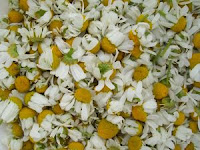Flowers are small and they can be male and female: the formers are yellow and they grow first, even in January, covering leafless brunches; the second are formed by green bracts and have numerous red stems.
The fruit is enclosed in a cluster of tube-shaped leaves.
When the nut is ripe (September-October), it takes a brown colour and spontaneously detaches from the shell falling down.
The edible part is the seed enclosed in the wooden shell. It has to be eaten fresh or, if you eat it dried, it must not be older than one year from the harvest since it becomes rancid and indigestible.
For their high energetic power (660 calories for 100 grams (3.52 oz)), nuts are suitable for children and teenagers, or for those who need a food supplement. And, since they do not contain sugar, they are suitable for diabetics too.
In herbal medicine, leaves and branches bark are used.
The first ones are gathered in July-August without stem, the second in October-November from at least 2 years old branches: it is detached from the branch with a pocketknife, chopped into 10 cm pieces and dried in the sun. The leaves, on the contrary, are dried in the shadow frequently turning them. They both are preserved in a paper bag sheltered from light and humidity.
Officinal properties of hazel leaves and bark are essentially astringent, anti-inflammatory, febrifuge and purifying.
Leaves are also used as vein tonic and vasoconstrictor and as a treatment against varicose veins, phlebitis and hemorrhoids.
Anti-inflammatory and purifying decoction (internal use):
Boil 25 g (0.88 oz) of leaves in 1 l of water for 3 minutes. Drain, sweeten with honey and drink 3 cups per day.
It’s very helpful in case of bowel inflammations and as body purifiant.
Decoction for dermatitis and hemorrhoids (external use):
Boil 40 g (1.41 oz) of bark in 1 l of water for 8 minutes. Let it cool and drain. It’s very helpful to make compresses, to rub on irritated skin, to cleanse light abrasions in case of dermatosis, and in case of haemorrhoids too.



















































